
| Publisher: | Dell | |
| Genre: | Romantic Comedy, Family Life, Transgender, General, Romance, Literary, Fiction, LGBTQ+ | |
| ISBN: | 9780593723944 | |
| Pub Date: | August 2024 | |
| Price: | $18 |
| Starred | Fiction |
by Shelly Jay Shore
Shelly Jay Shore's debut novel is a triumph--the literary manifestation of an embrace that makes you feel safe enough to break down. Rules for Ghosting is a story of queer healing, and the kind of unflinching love that can pull a person through seemingly insurmountable turmoil.
Ezra Friedman grew up around death at the Chapel, his family's funeral home. Unlike his family, though, he can see the silent ghosts who hang around. He became a birth doula to get away from death and to avoid the disapproval of his grandfather's ghost when Ezra starts his transition as a trans man. But when his part-time job at the Queer Community Center is put on furlough because of renovations and his mother announces that she's been having an affair with the rabbi's wife, Ezra takes over his mother's job as the Chapel's bookkeeper. To complicate matters even more, Ezra's gorgeous new neighbor, Jonathan, volunteers at the Chapel to prepare bodies for burial according to Jewish tradition, and Jonathan's dead husband is breaking every rule Ezra thought he knew about ghosts by talking to Ezra. As long-held secrets are revealed and the status quo unravels, Ezra's world shifts and he learns new ways to love others--and himself.
With equal amounts of humor and pathos, Rules for Ghosting is sensitively and gorgeously told. Shore writes characters real enough to step off the page, filled with raw vulnerabilities that allow readers to share in all their pain and love. --Dainy Bernstein, freelance reviewer

| Publisher: | Riverhead | |
| Genre: | Women, Family Life, General, Literary, African American & Black, Fiction | |
| ISBN: | 9780593544372 | |
| Pub Date: | September 2024 | |
| Price: | $29 |
| Starred | Fiction |
by Danzy Senna
Each of Danzy Senna's books, including her remarkable 1998 debut, Caucasia, have spotlighted biracial identity. "Biracial," however, isn't the preferred term in the novel Colored Television; "mulatto" is "better" because "biracial could be any old thing. Korean and Panamanian or Chinese and Egyptian. But mulatto is always specifically a mulatto."
Senna presents a peripatetic Los Angeles family quartet: Jane and Lenny and their two kids. Jane is a writer toiling over her sophomore title; nine years have passed since her critically acclaimed debut. They live in a city they can't afford, which means they're constantly moving. Their latest address belongs to Brett, Jane's friend from grad school, who's on a film shoot set in Australia for a year. For six months, they've been particularly enjoying Brett's carefully curated wine collection while Jane finishes her tome. But her novel is more "major failure," prompting a major risk: she contacts Brett's television agent with "a pitch for a show that was 'particularly relevant at this historical juncture.' Whatever the hell that meant." Nonetheless, being a friend of Brett gets Jane into Hollywood's inner sanctums, with powerful ears willing to listen: "I want to write a comedy about mulattos.... More feminine and a lot darker." Is primetime ready for her colorful vision?
Senna is a fabulously sly, provocative writer, seamlessly focusing race and privilege on virtually every page. Perhaps more impressive is how she deftly avoids didactic stumbles, transforming Hanna Andersson catalogs, Ikea Billy shelves, and Wolf stoves into clever, charged leitmotifs. Until the credits roll, Senna offers brilliant entertainment with plenty of surprising, shocking enlightenment. --Terry Hong
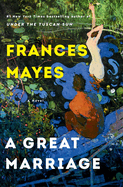
| Publisher: | Ballantine Books | |
| Genre: | Women, Cultural Heritage, Family Life, General, Fiction | |
| ISBN: | 9780593498989 | |
| Pub Date: | August 2024 | |
| Price: | $30 |
| Fiction |
by Frances Mayes
In A Great Marriage, Frances Mayes (Under the Tuscan Sun; Women in Sunlight) paints a portrait of intimate love, fierce loyalty, and vulnerability. American Dara Willcox and Brit Austin Clarke seem madly in love, until Austin receives shocking news mere days before their wedding. As he faces the consequences of his actions from a brief trip back to London months earlier, Austin finds that his relationship with Dara and the rest of his own life may never be the same. Dara returns home to North Carolina, where her perfectly matched parents, relationship-expert grandmother, and the rest of her shocked support system don't pry. Dara's journey from her present darkness toward the enlightenment of self-discovery involves touching moments of familial bonds, solitary reflections in nature, coming to terms with the destruction of her perfectly planned future, and a confrontation with her new unknown.
A Great Marriage depicts Dara and Austin's whirlwind romance and their personal struggles following the canceled wedding, along with the blossoming relationships among their friends and families. Dara's close-knit ties with the women in her family allow multigenerational wisdom to flourish in Mayes's beautiful prose and engrossing descriptive language. She weaves acute observations about interpersonal connections through the novel's multiple perspectives, which include first- and third-person points of view. Dara and Austin's separate paths prove that the happiest endings are not always the easiest to achieve. Both perspectives offer insight into facing unforeseen circumstances and following one's heart. Ultimately, Mayes explores one of the most important questions about love: Can it really conquer all? --Clara Newton, freelance reviewer
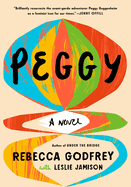
| Publisher: | Random House | |
| Genre: | General, Literary, Biographical, Fiction, Historical | |
| ISBN: | 9780385538282 | |
| Pub Date: | August 2024 | |
| Price: | $29 |
| Fiction |
by Rebecca Godfrey, Leslie Jamison
The American heiress and iconic art collector Peggy Guggenheim comes to life in Rebecca Godfrey's posthumous novel, Peggy. Godfrey, who died in 2022, spent 10 years writing this bold and intimate portrait of Guggenheim (inspired by her "scandalous" autobiography), which Leslie Jamison (The Empathy Exams) finished after Godfrey's death.
Peggy imperiously begins her story with "I am the daughter of two dynasties" and unravels the tapestries of the rigid social hierarchy among the rich and famous of 1912 New York City. Along with her sisters, Benita and Hazel, 14-year-old Peggy is forced to grow up quickly when their wealthy father, Benjamin, goes down with the Titanic in April 1912. The tragedy and triumph of her father's final hours haunts and inspires Peggy in equal degrees to set her own life course, one bursting with a passion for surrealism and the company of bohemians.
Godfrey's prose exquisitely navigates Peggy's inner contradictions, depicting her as a rebellious iconoclast who lives and loves fiercely but also wrestles with insecurity as a Jewish woman. Embroidered with fascinating luminaries from the world of art and literature, including Man Ray, Djuna Barnes, Emma Goldman, and Samuel Beckett, the novel ends with the opening of Peggy's gallery in London 1938. Though readers might wish for more (an epilogue in 1958 breezes over Peggy's heroic actions to save artwork from the Nazis in World War II), Godfrey's last novel is a dazzling and colorful ode to an irresistibly independent spirit. --Peggy Kurkowski, book reviewer and copywriter in Denver
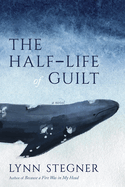
| Publisher: | High Road Books | |
| Genre: | Literary, Fiction | |
| ISBN: | 9780826366887 | |
| Pub Date: | September 2024 | |
| Price: | $27.95 |
| Fiction |
by Lynn Stegner
From the start, Lynn Stegner's The Half-Life of Guilt delivers an ominous feeling. Soon enough, what it's building to is revealed, and it is, in fact, awful, but the awful thing is not the point. In the months and years that follow, the twins Nina and Clair process those few minutes that changed everything.
Like the accumulation of that family history, the present-day narrative tilts and rolls like a slow-moving ship, taking readers into some unknown, inexorable future. Clair, now a botanist, and Mason, a photographer, deal with the intricacies of their ongoing relationship on their way to a remote area in Baja California, Mexico. There, a saltworks expansion is likely to reduce or possibly eliminate the California gray whales that have just recently returned from the edge of extinction. Though the destruction being wrought by unscrupulous actors is real, the heart of this story is not environmentalist polemic. Instead, it's about love--familial and romantic love--and about making yourself vulnerable to another. It's about forgiveness and hope and, of course, guilt.
Stegner's simply stunning writing is full of sentences that sing off the page. This is a thoroughly literary novel, but the revelations keep raising the pulse of the story. In that first moment with the whales, "Clair manages to forget herself," and Clair's moment of forgetting marks a shift that will inform every moment to follow, including her relationship with Nina, who figures in all of Clair's past and hides inside every hope she might have for the future. Stegner knows the powerful bond between sisters, and The Half-Life of Guilt is a powerful story, beautifully told. --Sara Beth West, freelance reviewer and librarian
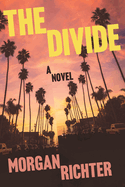
| Publisher: | Knopf | |
| Genre: | Women, Suspense, Thrillers, Fiction, Noir | |
| ISBN: | 9780593685679 | |
| Pub Date: | August 2024 | |
| Price: | $28 |
| Fiction |
by Morgan Richter
In Morgan Richter's The Divide, a murder mystery mixes with an enthralling tangle of identity, trauma, and an exploration of art versus commerce. The novel begins on a hot November day in Los Angeles, Calif., when an officer from the sheriff's department shows up at the shabby office where Jenny St. John (illegally) lives and works as a struggling faux psychic--or, in her words, "an intuitive counselor."
Serge Grumet, a prominent film director, has been shot to death, and abstract painter Genevieve "Gena" Santos, his ex-wife, has disappeared. What makes the incident delightfully complicated is that 40-something Jenny not only bears a striking resemblance to Gena but, years ago, she was the lead in Serge's first movie, The Divide. Even more: Gena had claimed that she was the actress in The Divide and that her name was Jenny St. John before she changed it. Jenny's regrets infuse this identity interplay; she's haunted by failed artistic ambitions that would have led her to a life like Gena's, if she had sustained them.
When Gena's friend Elizabeth "Boots" Pontifex hires Jenny as a psychic adviser to help find the murderer and, hopefully, Gena, too, the novel takes flight. Richter artfully arranges a full spectrum of Hollywood types, including greedy managers, influencers, up-and-comers, and has-beens, further inquiring into the relationship between fame and capitalism. The added layer makes this novel more than a simple whodunit. Richter wraps the mystery in a cat-and-mouse game of memory versus truth, and readers won't be sure they've uncovered who is who until the very end. --Nina Semczuk, writer, editor, and illustrator
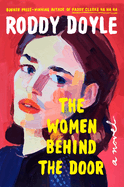
| Publisher: | Viking | |
| Genre: | Women, Psychological, Literary, Fiction | |
| ISBN: | 9780593831687 | |
| Pub Date: | September 2024 | |
| Price: | $29 |
| Fiction |
by Roddy Doyle
Some parents are great, but some leave scars that endure. Not a lighthearted thought, but a gifted author can make any subject an exciting experience. That's what readers get in The Women Behind the Door, Roddy Doyle's tornado of suppressed trauma and the difficulty of caring for one's kids. Those who have read Doyle's The Woman Who Walked into Doors and its sequel, Paula Spencer, have already met long-widowed Paula, who is still living in Ireland and smarting at age 66 from having been "married to a thief" so abusive that she had to whack him with a frying pan. Now, however--the novel takes place from May 2021 to January 2023--she's happy, with a job at a dry cleaner, a relationship with her "man friend," and the knowledge that her adult kids are well. Except for the Covid-19 pandemic, everything's great.
Until her eldest, 40-something Nicola, returns home and tells Paula she needs a break from her husband and children. Otherwise, Nicola says, "I'll kill them." Equally portentous is her follow-up: "I want to die." Now, it's Paula's turn to mother Nicola, "the woman who's been mothering her for thirty years." What follows is a brittle reunion filled with recriminations and truthful exchanges. Concern over Covid-19 is merely the scaffolding Doyle (The Guts) uses to construct a flashback-filled memory piece about emotional trauma. Readers familiar with Doyle's past novels won't be surprised by the cheerfully profane dialogue and zippy vernacular on every page of this emotionally resonant work. -- Michael Magras, freelance book reviewer
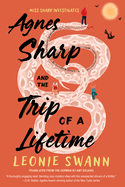
| Publisher: | Soho Crime | |
| Genre: | Dark Humor, Cozy - Holidays & Vacation, Humorous, Mystery & Detective, Amateur Sleuth, Fiction | |
| ISBN: | 9781641295802 | |
| Pub Date: | September 2024 | |
| Price: | $27.95 |
| Mystery & Thriller |
by Leonie Swann, trans. by Amy Bojang
It's Agatha Christie by way of The Golden Girls in Agnes Sharp and the Trip of a Lifetime, Leonie Swann's delightsome second Miss Sharp Investigates novel, translated from the German by Amy Bojang. The series, which began with The Sunset Years of Agnes Sharp, features a clutch of pensioners living in the English village of Duck End in a house owned by 80-something fellow resident Agnes Sharp, a retired policewoman whose default setting is low-simmering rage. Call the books crusty-cozy mysteries.
Agnes Sharp and the Trip of a Lifetime finds the housemates ditching winter-blighted Duck End for the Eden, an isolated seaside luxury eco hotel in Cornwall. On their first day there, Agnes witnesses from a hotel terrace what appears to be a cliffside murder: first there were two people on the cliff, and then there was one. Soon the hotel becomes the setting for a murder spree, and although Agnes has been "irritated by the smooth efficiency of the Eden," this is going too far. She marshals her crime-solving housemates, whose limitations, including blindness and wheelchair dependence, neither daunt them nor preclude them from being suspected of murder.
The shrewdly engineered puzzle at the novel's center lodges inside a portrait of through-thick-and-thin friendship. Swann also offers rueful-humorous considerations of youthful folly (there's a withering parody of a popular blogger) and the realities of aging and mortality. Agnes, for one, has nothing against the dead: "After all, they didn't make any stupid comments, they were discreet and polite, albeit not always hygienic." --Nell Beram, author and freelance writer
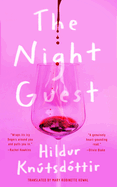
| Publisher: | Tor Nightfire | |
| Genre: | Occult & Supernatural, Horror, General, Fiction | |
| ISBN: | 9781250322043 | |
| Pub Date: | September 2024 | |
| Price: | $19.99 |
| Science Fiction & Fantasy |
by Hildur Knútsdóttir, trans. by Mary Robinette Kowal
A woman who fears she is suffering from an undiagnosed chronic illness gradually realizes she's facing a far more mysterious horror in The Night Guest, Hildur Knútsdóttir's startling English-language debut, translated from the Icelandic in spare prose by Hugo Award-winning author Mary Robinette Kowal.
Iðunn has been experiencing debilitating fatigue and unexplained bruises. She falls asleep and even sleeps through the night, but in the morning when she wakes up, she feels as if she has been performing difficult labor. Her initial attempts to get medical help make her feel as if the doctors believe it's all in her head, and even when she seeks out a younger female doctor who is willing to examine more possibilities, her test results show nothing abnormal. She turns to diet and exercise solutions, but one night she falls asleep with her fitness-tracker watch on and finds an additional 40,000 steps recorded overnight.
In an intimate first-person narration that pulls readers in with humanizing asides, The Night Guest cloaks its audience in the same fog of uncertainty that envelops Iðunn. With its brief page count and short chapters, every line and line break are used for maximum power. An eerie, disorienting effect pervades as Iðunn's life and relationships unravel and hints of what she is doing at night slowly build, leading to a horrifying climax. Those readers who enjoyed I'm Thinking of Ending Things by Iain Reid or Mind of Winter by Laura Kasischke should snatch this up. --Kristen Allen-Vogel, information services librarian at Dayton Metro Library
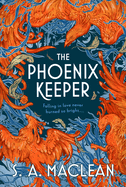
| Publisher: | Orbit | |
| Genre: | Fantasy, Romance, Fiction | |
| ISBN: | 9780316573092 | |
| Pub Date: | August 2024 | |
| Price: | $19.99 |
| Romance |
by S.A. MacLean
S.A. MacLean's first novel, The Phoenix Keeper, is a charming, cozy gem of a fantasy novel that's sure to appeal to fans of Travis Baldree's Legends & Lattes or TJ Klune's The House in the Cerulean Sea. The titular phoenix keeper is Aila Macbhairan, an anxious, introverted zookeeper who has worked hard to achieve her childhood dream of working in the aviaries at the San Tamculo Zoo.
Now, what Aila really wants to do is to restart the zoo's Silimalo phoenix breeding program and help bring back her favorite phoenixes from the verge of extinction. After all, Silimalo phoenixes have only been able to survive thanks to breeding programs across the world's zoos. But Aila's anxiety has not made her a favorite with her zoo's top brass, since she has a tendency to hide in the aviary, away from visitors and coworkers alike--except for her best friend, Tanya. However, when poachers steal a nest of phoenix eggs from another zoo, Aila is determined to do what she must to save the Silimalo phoenixes, even if it means asking Luciana, the zoo's annoyingly confident griffin keeper who has superbly glossy hair, to assist with Aila's breeding program proposal.
Sweet and awkward Aila takes charge in a story of overcoming obstacles and realizing what she is truly capable of. Aila and Tanya are very funny together, and as Tanya slowly helps Aila come out of her shell and reach out to those around her--including the intimidatingly perfect Luciana--readers will root for Aila's success. --Jessica Howard, freelance book reviewer
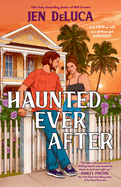
| Publisher: | Berkley | |
| Genre: | Romantic Comedy, Romance, Fiction | |
| ISBN: | 9780593641217 | |
| Pub Date: | August 2024 | |
| Price: | $19 |
| Romance |
by Jen DeLuca
Jen DeLuca (Well Met; Well Matched) leaves the Renaissance fair world of her first romance series behind for an equally vibrant setting in Haunted Ever After. Set in the tiny Gulf Coast town of Boneyard Key, Fla., whose tourism schtick is that it's haunted, this sweet and sexy novel is about found family and second chances.
After being priced out of Orlando, Cassie Rutherford didn't pay attention to the ghost-themed T-shirts in every shop window when she impulsively bought a small beach cottage in Boneyard Key. But when her electricity quits working and her refrigerator poetry magnets rearrange themselves to read "my house," Cassie realizes that the "haunted" thing might actually be real.
Because of the erratic power access at her house, Cassie starts doing her remote copywriter job at Hallowed Grounds, a coffee shop owned by handsome local Nick Royer. Nick grew up in Boneyard Key, and he shares the apartment above the coffee shop with a man named Elmer. But what he isn’t telling Cassie is that Elmer, the former owner of Hallowed Grounds, has been dead for years.
Clever, funny, and a bit spooky, Haunted Ever After will appeal to cozy mystery and paranormal romance readers alike. Cassie delves into the history of her house and tries to figure out who is leaving her fridge-magnet messages, and Nick is more than happy to help her solve the mystery as they grow closer. DeLuca creates a charming town full of entertainingly quirky characters sure to leave readers wanting more stories set in Boneyard Key. --Jessica Howard, freelance book reviewer

| Publisher: | Plough Publishing | |
| Genre: | Biography & Autobiography, Biography & Memoir, Music, Europe, Religious Intolerance, Persecution & Conflict, Nonfiction, Religion, Baltic States, History, Individual Composer & Musician, Comics & Graphic Novels | |
| ISBN: | 9781636081342 | |
| Pub Date: | September 2024 | |
| Price: | $26 |
| Starred | Graphic Books |
by Joonas Sildre, trans. by Adam Cullen
Arvo Pärt is arguably the most performed living composer in the world. Estonian cartoonist Joonas Sildre worked closely with his renowned compatriot to create Between Two Sounds, a gorgeous graphic title depicting Pärt's life, from his 1935 birth to his musical transformations. Sildre's meticulous, borderless panels--in black, white, and shades of greenish-grey--are accompanied by Adam Cullen's succinct, lucid translation from the Estonian.
Pärt's mother places him in a children's music school in 1945. By 1949, he announces his intention to become a composer, but "a different kind!" He consistently strains against institutional expectations and restrictions, exacerbated by the Soviet occupation of Estonia. His compositions are considered so modern and avant-garde as to place himself in danger. Cleverly manipulating the system of political gatekeeping becomes a necessity. Sildre skillfully captures the seemingly ridiculous back-and-forth of incomprehensible judgment.
Pärt's 1968 composition "Credo" engenders a "Silentium" during which Pärt turns inward, finds new love, recommits to Orthodox Christianity, and immerses himself in medieval texts, teachings, and chant. When he resumes composing in 1975, his goal is to "reach religion's core through my own essence," inspiring the invention of his distinct form, tintinnabuli. As Pärt's reputation--and audience--grows globally, he's deemed more threat than comrade, resulting in surveillance, violent intrusion, and the family's expulsion in January 1980 from Estonia.
Sildre brilliantly uses simple lines--presented in swirls, circles, empty musical staffs--to explicate, connect, and enhance Pärt's creative and emotional musical journeys, moving up, down, straight, corkscrew, around and around, and continuing off the pages. Sildre's art radiantly confirms Pärt will not be contained, spreading his music throughout the world. --Terry Hong

| Publisher: | Mariner | |
| Genre: | Biography & Autobiography, Editors, Journalists, Publishers, Women, Editing & Proofreading, Literary Figures, 20th Century - General, History, Language Arts & Disciplines, Modern | |
| ISBN: | 9781328595911 | |
| Pub Date: | September 2024 | |
| Price: | $35 |
| Starred | Biography & Memoir |
by Amy Reading
Amy Reading's The World She Edited: Katharine S. White at the New Yorker is the kind of assiduously researched benchmark book that will get its share of nominations when awards for biography are being considered. It deserves to win at least some of them, and maybe all of them.
Katharine Sergeant White (1892-1977) was raised comfortably in Massachusetts and attended Bryn Mawr College, where she coedited the college's literary monthly. She was hired by the New Yorker in 1925, when the humor magazine, as it was then characterized, was six months old and fighting for its life. White stayed on for 36 years, during which time she helped hone the magazine's distinctive tone. She also drew many women into her stable of fiction writers and cultivated female talent like Mary McCarthy and Jean Stafford.
It's hard to imagine the book's subject taking her Blackwing pencil to Reading's sentences, which gracefully synthesize the overlapping aspects of White's life: professional, familial, social, marital, medical. Among this woman-in-a-man's-world story's fringe benefits are insights about the subject's second husband, New Yorker contributor turned laureled children's author E.B. White, and pocket-size profiles of the literary giants White worked and sparred with (James Thurber was the spikiest thorn). Reading (The Mark Inside), who waded deep into the New Yorker's archives and White's personal papers for this book, asserts that her subject's "life story was best told through the detailed catalog of her relationships with writers," but The World She Edited may well tell White's story even better. --Nell Beram, author and freelance writer
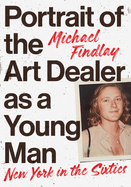
| Publisher: | Prestel | |
| Genre: | Biography & Autobiography, Art, Business Aspects, Contemporary (1945- ), History, Memoirs | |
| ISBN: | 9783791377261 | |
| Pub Date: | September 2024 | |
| Price: | $35 |
| Biography & Memoir |
by Michael Findlay
As far as reputations for civic-mindedness go, art dealers probably rank alongside schoolyard bullies. Then there's Michael Findlay. In his photo-rich memoir, Portrait of the Art Dealer as a Young Man: New York in the Sixties, Findlay documents art's grooviest era with wit and uncommon egolessness.
Findlay (The Value of Art; Seeing Slowly) was born in Scotland in 1945 and raised in London, where his interest in visual art was seeded. Long enamored of the United States, he used a pit stop at a Canadian university to reach New York in 1964, when the city's art world was "a far cry from the monetized, high-stakes glamor swamp it would morph into in the twenty-first century." Findlay landed at the Richard Feigen Gallery, where "I would learn the profession that has kept three fairly hot meals a day on my table... for, so far, sixty years."
A scenester before the word was coined, Findlay effortlessly paired work and play, as when he commissioned actor Dennis Hopper's portrait from Andy Warhol, a friend who sidelined as a matchmaker: Warhol convinced Findlay to date Factory superstar Jane Forth. (The author didn't need Warhol's encouragement to date Carly Simon.) Findlay largely reserves any peevishness for the commercialization of Manhattan's SoHo, a gritty, undiscovered neighborhood when he arrived and his professional base until the late 1970s. When he was starting out, Findlay explains with characteristic snap, "Anyone in the art world using the word 'market' would have been directed to Gristede's grocery store on Lexington Avenue." --Nell Beram, author and freelance writer
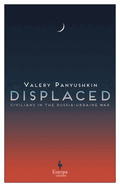
| Publisher: | Europa Editions | |
| Genre: | Biography & Autobiography, Europe, Ukraine, Wars & Conflicts, General, History, World, Russian & Soviet, Survival, Russia, Post-Soviet, Political Science | |
| ISBN: | 9798889660583 | |
| Pub Date: | August 2024 | |
| Price: | $18 |
| History |
by Valery Panyushkin, trans. by Ellen Vayner, Brian James Baer
"We are the aggressors," Russian journalist Valery Panyushkin boldly admits in his starkly sobering Displaced, which chronicles the plight of the people, including himself, caught in the middle of a war they never wanted. Fueled by his "state of desperation" after Russia invaded Ukraine on February 24, 2022, Panyushkin decided to write about the refugee experience to cope with the reality of his country's action.
Panyushkin's reporting is harrowing but also hopeful as he documents the social networks that cropped up after the invasion, such as the humanitarian agency Rubikus, which organizes evacuations and resettlements for thousands of refugees. Threaded throughout the book are Panyushkin's musings on propaganda and how both sides effectively wield it for leverage, as when he hears a refugee report that Ukrainian children have been maimed by mines disguised as toys by Russian soldiers ("Personally, I refuse to believe in toy-bombs," he reflects). Even merely writing and publishing this book would be enough for a prison sentence in Russia, and in the final chapter, Panyushkin charts his own real-time transformation into a refugee who must leave his homeland forever as he grapples with the question, "What can you do with the fact that the people I live with call evil good and darkness light?"
Panyushkin assumes that readers have a degree of knowledge, but footnotes clarify more obscure references. His use of the present tense is initially jarring, but the excellent translation from Russian by Brian James Baer and Ellen Vayner softens the delivery. Displaced is an impressive and courageous work of journalism that warns readers, "Anyone can become a refugee." --Peggy Kurkowski, book reviewer and copywriter in Denver

| Publisher: | Bold Type Books | |
| Genre: | American Government, United States, Political Ideologies, Radicalism, State & Local - West (AK, CA, CO, HI, ID, MT, NV, UT, WY), Local, History, Political Science | |
| ISBN: | 9781645030430 | |
| Pub Date: | September 2024 | |
| Price: | $30 |
| Political Science |
by Sasha Abramsky
Though most Americans who follow politics are transfixed by the daily swirl of events in Washington, D.C., their everyday lives are often more directly affected by controversies closer to home. That's what makes journalist Sasha Abramsky's Chaos Comes Calling such an important and disturbing book. In this fine-grained account of political and social turmoil in two small communities riven by disputes, he illustrates how the intense conflict in these outwardly placid places is a microcosm of the polarization in the nation at large and illustrative of the difficulty of transcending it.
Abramsky (The House of Twenty Thousand Books) focuses his attention on Sequim, Wash., and largely rural and small-town Shasta County, in Northern California. After the onset of Covid-19 in March 2020, discontent over lockdowns and the imposition of mask and vaccination mandates quickly sparked resistance that mushroomed into pervasive and often violent threats against public health officers and elected officials. A similar cycle ensued when nationwide protests erupted after George Floyd's murder and after Donald Trump began spreading his false claims about rigged voting machines and voter fraud that he insisted cost him the 2020 election.
Abramsky's sympathies clearly lie with local residents opposing the excesses of hard-right extremism, but he relies on interviews with participants and observers from all perspectives to describe with commendable objectivity what he calls this "stranger-than-strange political moment." While the 2024 presidential contest will draw most of the attention as the race intensifies, he makes clear that, long after it's over, some of the fiercest and most consequential battles to determine the future of American democracy will be fought in our own backyards. --Harvey Freedenberg, freelance reviewer

| Publisher: | Westwood Press | |
| Genre: | Environmental Policy, Public Policy, Science, Activism & Social Justice, Global Warming & Climate Change, Social Science, Political Science | |
| ISBN: | 9781958510032 | |
| Pub Date: | August 2024 | |
| Price: | $27.95 |
| Political Science |
by Eve Driver, Tom Osborn
In their incisive joint memoir, What We Can't Burn, Eve Driver and Tom Osborn, who met as students at Harvard, chronicle their frequently contentious friendship and share their often opposing perspectives on how to counter climate change. Driver is an American journalist and climate activist who was heavily involved in Harvard's fossil fuel divestment campaign; Osborn is a Kenyan green energy entrepreneur who cofounded a company that converted sugarcane waste into clean-burning cooking fuel before coming to Harvard. They met during their junior year and immediately found themselves arguing over how to solve the climate crisis. To this day, they often disagree, but they have gained a deep respect for each other's diverging viewpoints and "distinct psychologies of hope."
Told as a dialogue between chapters from Driver's and Osborn's perspectives, What We Can't Burn provides context for the worldwide climate crisis and the authors' individual approaches to it. Osborn pushed for money to support innovative products and practices; Driver believed that powerful institutions, including Harvard, must be called to account for their complicity. Their first-person voices allow readers to comprehend where they agree, overlap, and sometimes misunderstand one another. Driver's visits to Kenya, including a stay with Osborn's family, deepened her understanding of his experience; Osborn's time at Harvard sharpened him, but made him impatient to keep effecting change beyond the ivory tower. Gradually, they came to respect each other's ideas, even when they disagreed. As Driver notes in her conclusion, this "difficult listening" is vital for anyone who hopes to navigate complex 21st-century issues with grace, while preserving the friendships that sustain and challenge them. --Katie Noah Gibson, blogger at Cakes, Tea and Dreams
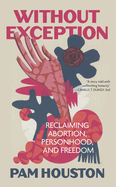
| Publisher: | Torrey House Press | |
| Genre: | Nature, Women in Politics, Gender Studies, Abortion & Birth Control, Human Rights, Literary Collections, Social Science, Essays, Political Science | |
| ISBN: | 9798890920003 | |
| Pub Date: | September 2024 | |
| Price: | $15.95 |
| Social Science |
by Pam Houston
In Without Exception: Reclaiming Abortion, Personhood, and Freedom, Pam Houston (Deep Creek, Contents May Have Shifted) collects "facts and impressions in and around the subject of abortion," weaving the political history of reproductive freedoms in the United States with her personal experiences with abortion in a collection that is as appropriately tangled, layered, and complex as the issues she is writing about.
Houston outlines the short-lived history of abortion rights in the United States, lasting "forty-nine years, five months, and two days" between the passing of Roe v. Wade in 1973 and its eventual fall with the Dobbs v. Jackson decision in 2022--a span of time that almost perfectly aligned with the span of Houston's own "reproductive life." Without Exception is rife with facts but a far cry from a dry history of abortion rights; each element of this broader political and cultural history is important, relevant, and necessary for understanding the context of each of Houston's three abortions and her commitment to remain childless by choice.
This mix of the personal and the political is where Without Exception truly shines, as Houston writes with candor and urgency about her experience of abuse, abortion, and the freedom to choose her own path in life. "Feminism is every woman's right to her own story," reads the entirety of chapter 24, and this is Houston's: a timeless story of self-determination inextricably intertwined with a political moment in time, a personal reckoning that lays bare the heart of the fight for reproductive justice, and an urgent and heartfelt reminder to give and receive love and mercy to each other--and to ourselves. --Kerry McHugh, freelance writer
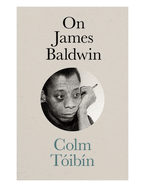
| Publisher: | Brandeis University Press | |
| Genre: | Biography & Autobiography, Comparative Literature, Law, Literary Figures, Literary Criticism, Civil Rights, Literary Collections, Historical, Essays | |
| ISBN: | 9781684582471 | |
| Pub Date: | August 2024 | |
| Price: | $19.95 |
| Reference & Writing |
by Colm Tóibín
Add the Irish author Colm Tóibín (Long Island) to the long list of writers inspired by James Baldwin. Brandeis University invited Tóibín to give a series of lectures celebrating Baldwin's life and work to coincide with Baldwin's 2024 centenary. Tóibín was an apt and inspired choice, as the five entries in On James Baldwin make clear. At 18, Tóibín briefly considered entering the seminary, but then he read Go Tell It on the Mountain, with its evocation of "Henry James, the high priest of American refinement," and "the way in which the heightened emotion around ritual and religious belief strayed into same-sex desire, rendering the latter as unfathomable and as sacred as the former, but more dangerous." This was at a time when Tóibín was coming to terms with his "pale, hidden homosexuality." So much for the seminary.
Each of these erudite pieces pays tribute to Baldwin's achievements. Tóibín, who rendered Henry James so vividly in The Master, offers many examples of Baldwin's influence on his own work and that of others; gives astute analyses of works such as Giovanni's Room, which, like E.M. Forster's Maurice, was written "in a time when homosexuality was not merely forbidden or disapproved of, but also strangely invisible"; and draws parallels between Baldwin's writings and that of others, such as noting that Giovanni's Room and Oscar Wilde's De Profundis both "dramatize the love between two men under pressure." Readers new to Baldwin as well as those who have read his entire output will savor this appreciative work. --Michael Magras, freelance book reviewer
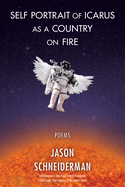
| Publisher: | Red Hen Press | |
| Genre: | Political & Protest, American, General, Poetry, Subjects & Themes, Jewish, LGBTQ+ | |
| ISBN: | 9781636281629 | |
| Pub Date: | August 2024 | |
| Price: | $17.95 |
| Poetry |
by Jason Schneiderman
Reading Jason Schneiderman's poetry is like watching someone walk a large, extravagant animal on a leash: always contained, always unexpected. Even as each line stretches and surprises, Schneiderman is indisputably in control, and his collection Self Portrait of Icarus as a Country on Fire highlights this blend of constraint and prodigality.
Fans of Ada Limón and Ross Gay will love this collection, which explores the personal and the universal, even tackling meta issues of craft, as seen in "The Speaker in this Poem." Noting a shift away from persona, what Schneiderman calls "a little wall between me and the reader," he considers the distinction between what is true and what is imaginary in a poem. That wall dissolves in the most vulnerable poems, such as the series of "Gay Divorce" poems, or "Catastrophist," which begins "Your heart doesn't have to break every day" and spools out to illuminate living with anxiety: "I've had three catastrophic thoughts today,/ and none of them seem likely to come true,/ and yet I have been carrying around those fears,/ trying to keep them at bay, pretending I'm not/ panicking over a narrative entirely in my head." Schneiderman applies a deft hand even to such weighty subjects as antisemitism and grief, skating readers through demanding lines, as in "Blood and Soil": "Some find God/ inside me./ I say, Home is/ where the knives are./ What Jew doesn't wander?"
Self Portrait of Icarus as a Country on Fire is an arresting collection that sees into all manner of truths, those freighted with darkness and those that emerge in sparkling light. --Sara Beth West, freelance reviewer and librarian
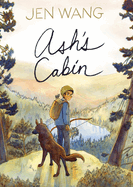
| Publisher: | First Second | |
| Genre: | Family, Young Adult Fiction, Multigenerational, Comics & Graphic Novels, Diversity & Multicultural | |
| ISBN: | 9781250754066 | |
| Pub Date: | August 2024 | |
| Price: | $17.99 |
| Starred | Children's & Young Adult |
by Jen Wang
Jen Wang (Stargazing; The Prince and the Dressmaker) shows just how creative and versatile an artist she is in Ash's Cabin, a graphic novel featuring a teen who seeks self, ancestry, and home in the California wilderness.
Fifteen-year-old Ash had a special relationship with Grandpa Edwin, who lived on a rural ranch near Shasta-Trinity National Forest. Edwin was "resourceful but odd" and spoke of "building a secret cabin where no one could find him." When Edwin started losing his memory, Ash's parents moved him nearby and Ash's uncle's family moved to the ranch. Now, the family is selling the property. Ash is devastated--they always felt deeply connected to Grandpa Edwin and the land. Ash, who feels trapped and diminished by a world that has difficulty accepting their gender identity and new name, receives permission to spend August at the ranch with pup Chase and cousin Reese. But Ash doesn't mean to stay--Ash is planning to take Chase and go solo into the wild to find Edwin's secret cabin and live off the land.
Wang uses a consistently earth-toned palette and skillful formatting, creating something that is a mix between graphic novel and illustrated novel; some pages are divided neatly by panels; some are mostly text with spot art; and some are breathtaking full-page bleeds with rays of sun or spikes of flame. Ash's Cabin is a wilderness tale that features the great unknown both within and without, as Ash struggles to survive the elements and their own loneliness. Wang, who has given readers drag queen princes and medical dramas, has developed a story that is adventurous, sensitive, and realistic. Readers of graphic novels, queer fiction, nonfiction, and wilderness stories should all find something to adore here. --Siân Gaetano, children's/YA editor, Shelf Awareness
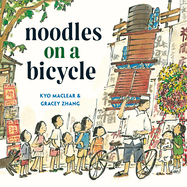
| Publisher: | Random House Studio | |
| Genre: | Cooking & Food, Asia, Family, Juvenile Fiction, Historical, Multigenerational | |
| ISBN: | 9780593706084 | |
| Pub Date: | August 2024 | |
| Price: | $18.99 |
| Starred | Children's & Young Adult |
by Kyo Maclear, illust. by Gracey Zhang
Author Kyo Maclear (The Liszts) and artist Gracey Zhang (Lala's Words) collaborate once again (following The Big Bath House) for the delectably charming picture book Noodles on a Bicycle. "When the deliverymen set off in the morning, we sit outside and watch," the story opens. A mother, four children, and their kitty are all smiles as the cyclist glides by, laden with bowls, boxes, and trays. The destination? The nearby Old Sobaya noodle shop, where, since dawn, the chef has been "cutting noodles from buckwheat flour. Thin juwari noodles. Dark inaka noodles. Making his famous house broth." Those ceramic soup bowls, wooden boxes, and waiting trays are soon filled, then perfectly arranged in multiple layers. The deliverymen impressively balance the toothsome towers despite the "bump, bounce" of their tires as they "zip onto the main road and sail beyond the park" to feed hungry customers: university students, factory workers, office employees. Their acrobatic agility inspires their young audiences to practice their own mobile stacking, while the deliverymen continue to criss-cross the streets with their movable feasts.
Inspired by her own childhood summers in Japan, Maclear creates a delicious homage to "delivery heroes" whose hard work facilitated simple, satisfying joy. Zhang depicts the events of the long, single workday with whimsical energy. Her ink-and-gouache illustrations capture a bustling 1960s Tokyo and her closeups are filled with culturally relevant details: crockery and kitchens, tabletops and bedding, (still) iconic buildings. The duo repeat their symbiotic success, nourishing readers with quotidian history "worth remembering and celebrating." --Terry Hong
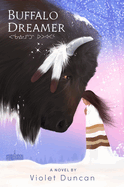
| Publisher: | Nancy Paulsen Books | |
| Genre: | United States - 20th Century, Social Themes, Juvenile Fiction, Historical, Prejudice & Racism, Native American | |
| ISBN: | 9780593624814 | |
| Pub Date: | August 2024 | |
| Price: | $17.99 |
| Starred | Children's & Young Adult |
by Violet Duncan
In Violet Duncan's first work of middle-grade fiction, Buffalo Dreamer, the Plains Cree and Taino from Kehewin Cree Nation author, performer, and educator tells an intimate and absorbing story of an Indigenous girl encountering hard truths.
Twelve-year-old Summer usually spends her summers on the Cree reservation in Alberta, Canada, where her mother's family lives. She hangs out with her favorite cousin, Autumn, picks berries with her kokom (grandmother), and braids sweetgrass with her mother. This season, however, is different--Summer begins having intense dreams. In her dreams, Summer is running away from one of the many residential boarding schools that stole Indigenous children away from their families and forced them to assimilate to white Canadian culture. The dreams become nightmares when it's revealed unmarked graves have been found at the residential school her mosom (grandfather) was once forced to attend. At a rally, community members share their traumatic experiences at the boarding school and the tween hears a story she knows intimately--is Summer dreaming the past?
Buffalo Dreamer, told in Summer's kind and heartfelt first-person narration, is intimate and compelling. Duncan makes a violent and devastating component of Indigenous history emotionally appropriate for middle-graders by connecting the author's rich and sensitive past to a hopeful present: "We are the living proof of our ancestors' resilience and the strong spirit of our people." This deeply and proficiently written novel is a welcome addition to the often-underexplored history of the Indigenous peoples of the Americas. --Natasha Harris, freelance reviewer
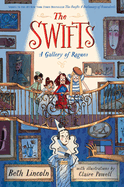
| Publisher: | Dutton | |
| Genre: | General (see also headings under Social Themes), Mysteries & Detective Stories, Family, Books & Libraries, Juvenile Fiction | |
| ISBN: | 9780593533260 | |
| Pub Date: | August 2024 | |
| Price: | $17.99 |
| Starred | Children's & Young Adult |
by Beth Lincoln, illust. by Claire Powell
Shenanigan Swift flits across the English Channel for a theatrical adventure with French relatives in The Swifts: A Gallery of Rogues, Beth Lincoln's quick-witted, eccentric, and wholly satisfying sequel to her celebrated debut, The Swifts: A Dictionary of Scoundrels, paired once again with the delightfully dramatic illustrations of Claire Powell (Octopants).
Having survived a tumultuous family reunion and nabbed a murderer in their midst, Shenanigan refocuses on finding the fabled lost treasure in their family's estate, Swift House. When a valuable painting is nicked from the manor, the family launches a diplomatic envoy to reconnoiter with the Martinets, estranged French relatives, who are equally eager to locate the painting. The Parisian adventure strives to "heal the rift" between the feuding branches but sparks "the sting of competition" in Shenanigan, whose cousins are equally intelligent and idiosyncratic. Even Shenanigan's faith in beloved relatives waivers as the mystery exposes the girl's vulnerabilities--and reveals an odd proliferation of both clowns and murders.
Droll humor combined with sophisticated and playful wordsmithing (which showcases Lincoln's obvious adoration of etymology) delivers engrossing results. Lincoln makes elegant use of French words subsumed into English vernacular (relatives have names like Mélee and Ennui), crafting a twisty plot with fresh characters that ring familiar to fans of her repartee. Powell's sharp black-and-white art highlights the battered Hôtel Martinet, home of the Martinets, as deftly as its eclectic residents and charming chapter headers hint at plot revelations. This unconventional heist story is another madcap masterpiece of language and mystery and an absolute delight for middle-grade readers. --Kit Ballenger, youth librarian, Help Your Shelf
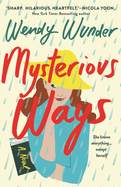
| Publisher: | Wednesday Books | |
| Genre: | Mental Illness, Magical Realism, Romance, Contemporary, Social Themes, Young Adult Fiction | |
| ISBN: | 9781250770202 | |
| Pub Date: | August 2024 | |
| Price: | $20 |
| Children's & Young Adult |
by Wendy Wunder
A girl with the ability to read minds tries to improve the lives of other teens in Mysterious Ways, an offbeat speculative YA novel from author and bookseller Wendy Wunder (The Probability of Miracles).
Since birth, 17-year-old Maya has been able to hear other peoples' thoughts. With one glance she can know a stranger's deepest secrets, dreams, fears, or desires. This knowledge is a burden that weighs heavily on Maya's psyche. After a stint at Whispering Pines psychiatric facility following the "the incident"--when Maya "jump[ed] fully clothed, into the pool" during a swim meet to avoid her fellow students' negative thoughts--strawberry-blonde, "milk white"-skinned Maya transfers to a new high school. She plans to lie low until graduation and "become a Normal Teenager™." Maya doesn't anticipate befriending bold and creative Korean American Lucy or developing a crush on olive-skinned, "self-proclaimed quasi-Buddhist" Tyler. These new relationships inspire Maya to use her powers to help her classmates--she resolves to "cure them of their insecurities, which would make them kinder, and thus save the actual world."
Maya's singular narrative voice is the highlight of the novel. She is self-aware and irreverent, with frequent detours into wry asides about an eclectic range of topics including the Bible, circuses, and Reaganomics. Wunder adeptly transitions between witty humor and heavy moments that convey the frightening ramifications of Maya's abilities. And many teens will relate to Maya's anxiety and exhaustion: her omniscience recalls the unprecedented insight into other people's lives we all experience through social media. The novel's imaginative combination of extraordinary powers grounded by everyday teenage turmoil should appeal to fans of both speculative and contemporary fiction. --Alanna Felton, freelance reviewer